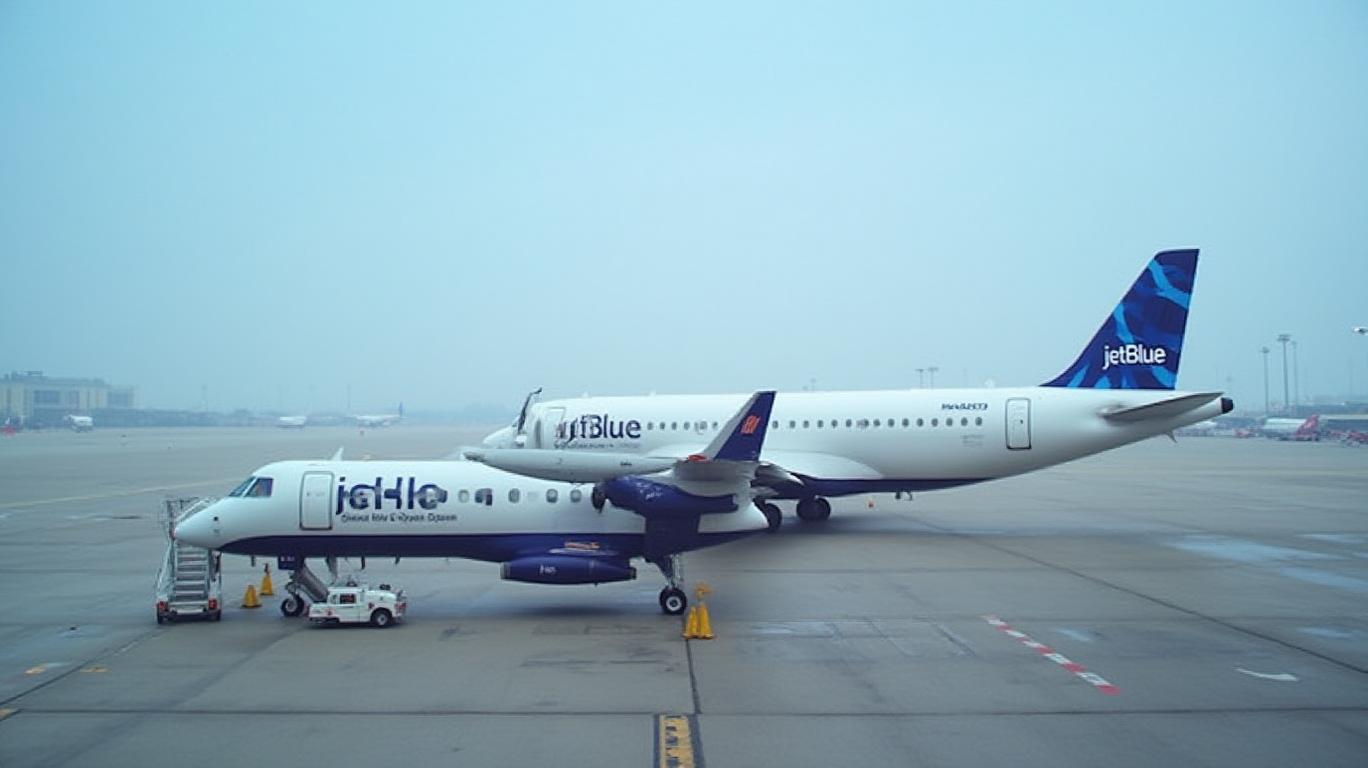Brinker and JetBlue Navigate Crosscurrents of Growth and Uncertainty
Amid a backdrop of economic volatility,
(NYSE: EAT) and JetBlue Airways (NASDAQ: JBLU) face diverging challenges. Brinker’s Q4 2024 results highlighted strong sales growth at its flagship Chili’s brand, but lingering concerns about Maggiano’s and macroeconomic risks have sparked investor caution. Meanwhile, JetBlue’s decision to withdraw its 2025 guidance underscores the airline’s vulnerability to trade-war-driven inflation and shifting demand patterns.Brinker: Chili’s Dominance Masks Underlying Risks
Brinker’s Q4 2024 results were a tale of two brands. Chili’s delivered a 14.8% jump in comparable sales, fueled by price hikes, the viral success of its “Big Smasher” burger, and aggressive advertising emphasizing value. Traffic rose 5.9%, though this was partially offset by a strategic pivot away from virtual brands. This shift, which reduced traffic by 2.3%, signals a move toward core operations but risks alienating delivery-focused customers.

The company’s Q3 2025 results, released in April, revealed even stronger performance: total revenues surged 27.2% to $1.425 billion, with net income doubling to $119.1 million. Margins improved sharply, with restaurant operating margins hitting 18.9%—a testament to cost discipline and sales leverage. However, Maggiano’s continued to struggle, posting a mere 0.4% sales increase amid traffic declines and rising commodity costs.
Despite these positives, Brinker faces headwinds. Its 2025 guidance projects revenue growth of just 3–4%, reflecting caution about economic moderation. Rising labor and maintenance costs—up $13.2 million in G&A expenses due to performance bonuses—add pressure. The company also warned that inflation, supply chain disruptions, and labor shortages could undercut its momentum. Investors must weigh Chili’s resilience against Maggiano’s drag and broader macro risks.
JetBlue: Trade War and Demand Shifts Force Strategic Retreat
JetBlue’s April 2025 decision to withdraw its 2025 guidance stemmed from deteriorating demand trends and rising costs. Q1 results showed a narrower-than-expected loss of $0.59 per share, but unit revenue (RASM) faces a 7.5% decline in Q2 due to softer bookings and inflation-driven expenses. The airline slashed Q2 capacity by nearly 5% to align supply with demand, a move that risks revenue but aims to protect margins.

The trade war’s impact is multifaceted. Tariffs on imported aircraft parts and repairs could add $ millions in costs, while higher fuel prices (though mitigated by $2.57/gallon pricing in Q1) remain a wildcard. JetBlue’s JetForward strategy—focusing on premium products, loyalty programs, and international routes—showed promise: Transatlantic revenue rose 28%, and its EvenMore amenities drove premium RASM growth. Still, the airline’s liquidity ($3.8 billion) and unencumbered assets ($5 billion) provide a buffer, but its 2025 CASM ex-fuel guidance (up 8.5%) highlights cost pressures.
Conclusion: Brinker’s Momentum vs. JetBlue’s Fragility
Brinker’s reliance on Chili’s success contrasts sharply with JetBlue’s vulnerability to macroeconomic headwinds. For Brinker, the stock’s 2024 rally—up 25%—reflects investor optimism about its value-driven strategy, but Maggiano’s underperformance and margin pressures remain risks. Its 2025 revenue target of $5.33 billion (up 21% from 2024) hinges on sustaining traffic growth and controlling costs.
JetBlue, meanwhile, faces a tougher path. While its Q1 liquidity and operational improvements (e.g., on-time performance gains) are positives, the trade war’s ripple effects and a 3.5% full-year RASM decline make its recovery fragile. Investors should watch for signs of demand stabilization and cost containment.
In a market where caution reigns, Brinker’s stock offers growth potential if Chili’s momentum endures, while JetBlue’s withdrawal of guidance underscores the airline’s need for stabilization. Both companies exemplify how individual brand strengths—and weaknesses—shape their ability to navigate an uncertain economic landscape.

Comments
No comments yet